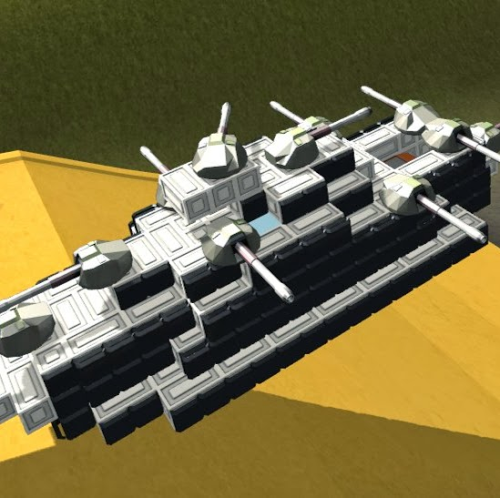Tom Minh Miner
age ~69
from Alpine, UT
- Also known as:
-
- Tom M Miner
- Tom E Miner
- Tom H Miner
- Tom V Miner
- Thomas M Miner
- Thomas E Miner
- Phone and address:
-
647 Hillside Cir, Alpine, UT 84004
(801)4920635
Tom Miner Phones & Addresses
- 647 Hillside Cir, Alpine, UT 84004 • (801)4920635
- Saratoga Springs, UT
- Orem, UT
- 2228 13035, Riverton, UT 84065
- Culver City, CA
- West Jordan, UT
- Sandy, UT
- Danbury, CT
- Salt Lake City, UT
Isbn (Books And Publications)

Resumes

Safquality Egnineer
view sourceLocation:
Alpine, UT
Industry:
Medical Devices
Work:
Edwards Lifesciences
Safquality Egnineer
Safquality Egnineer

Tom Miner
view source
Retail Loan Originator
view sourceWork:
Everbank/Tiaa
Retail Loan Originator
Retail Loan Originator

Tom Miner
view sourceSkills:
Six Sigma
Root Cause Analysis
Leadership
Change Management
Lean Manufacturing
Manufacturing
Root Cause Analysis
Leadership
Change Management
Lean Manufacturing
Manufacturing

Sales Executive Public Account Representative At Shi, International (Fka Software House International)
view sourceLocation:
United States
Industry:
Computer Hardware

Tom Miner
view sourceLocation:
United States
Us Patents
-
Catheter Having A Low Drag Septum
view source -
US Patent:6719726, Apr 13, 2004
-
Filed:Sep 24, 2002
-
Appl. No.:10/253682
-
Inventors:Clement Wan Chye Meng - Singapore, SG
Cheng Kiat Jin - Singapore, SG
Tom M. Miner - Riverton UT -
Assignee:Becton Dickinson and Company - Franklin Lakes NJ
-
International Classification:A61M 5178
-
US Classification:60416407
-
Abstract:The catheter and introducer needle assembly of this invention includes a catheter adapter at its proximal end having a hollow septum disposed therein. The septum preferably is hollow to minimize drag as the introducer needle is removed therefrom. If desired a gel or lubricious material may be disposed in the cavity.
-
Needleless Luer Access Connector
view source -
US Patent:6908459, Jun 21, 2005
-
Filed:Dec 7, 2001
-
Appl. No.:10/017024
-
Inventors:Weston F. Harding - Lehi UT, US
Carolyn E. Brown - Salt Lake City UT, US
Kelly D. Christensen - Centerville UT, US
Tom M. Miner - Riverton UT, US
Ralph L. Sonderegger - Farmington UT, US -
Assignee:Becton, Dickinson and Company - Franklin Lakes NJ
-
International Classification:A61M025/16
A61M005/00 -
US Classification:604533, 604256
-
Abstract:A needleless luer access connector is disclosed having a septum disposed in a housing. The septum has a proximal portion with a cross section, a medial portion with a cross section smaller than the cross section of the proximal portion, and a distal portion. A longitudinal slit extends through the septum from the proximal portion to the distal portion. The septum and housing are designed so that septum will not be rotated or removed from the housing when the connector is accessed by a male luer taper. In addition, the septum and housing are designed to bias the slit at the distal portion closed and so a male luer connector does not have to extend completely through the distal portion to open the slit at the distal portion. Finally, the septum and housing are designed to minimize the amount of dead space in the connector when accessed with a male luer taper.
-
Needleless Luer Access Connector
view source -
US Patent:7713250, May 11, 2010
-
Filed:Apr 21, 2004
-
Appl. No.:10/828964
-
Inventors:Weston F. Harding - Lehi UT, US
Carolyn E. Brown - Salt Lake City UT, US
Kelly D. Christensen - Centerville UT, US
Tom M. Miner - Riverton UT, US
Ralph L. Sonderegger - Farmington UT, US -
Assignee:Becton, Dickinson and Company - Franklin Lakes NJ
-
International Classification:A61M 5/14
-
US Classification:604256, 604 86, 60416701, 60416702, 60416704, 2511491, 2511493
-
Abstract:A needleless luer access connector is disclosed having a septum disposed in a housing. The septum has a proximal portion with a cross section, a medial portion with a cross section smaller than the cross section of the proximal portion, and a distal portion. A longitudinal slit extends through the septum from the proximal portion to the distal portion. The septum and housing are designed so that septum will not be rotated or removed from the housing when the connector is accessed by a male luer taper. In addition, the septum and housing are designed to bias the slit at the distal portion closed and so a male luer connector does not have to extend completely through the distal portion to open the slit at the distal portion. Finally, the septum and housing are designed to minimize the amount of dead space in the connector when accessed with a male luer taper.
-
Bubble Free—Self Primed Iv Set
view source -
US Patent:7722577, May 25, 2010
-
Filed:Aug 16, 2005
-
Appl. No.:11/205236
-
Inventors:Tom M. Miner - Alpine UT, US
-
Assignee:Becton, Dickinson and Company - Franklin Lakes NJ
-
International Classification:A61M 5/14
-
US Classification:604251
-
Abstract:A bubble free, self-priming IV set for use in the administration of liquids that includes a drip chamber comprising a chamber inlet and a chamber outlet, a bubble isolation device disposed within the drip chamber that prevents air bubbles from exiting the chamber outlet, a tube having an inlet end coupled to the chamber outlet of the drip chamber and an outlet end, and an end plug that includes an air vent. The end plug may be coupled to the outlet end of the tube and is a flow restrictor so that when a liquid is moving through the tube, the velocity of the liquid flow is controlled such that the front of the liquid does not trap bubbles in the tube.
-
Bubble Free-Self Primed Iv Set
view source -
US Patent:8038663, Oct 18, 2011
-
Filed:Apr 29, 2010
-
Appl. No.:12/770533
-
Inventors:Tom M. Miner - Alpine UT, US
-
Assignee:Becton, Dickinson and Company - Franklin Lakes NJ
-
International Classification:A61M 31/00
-
US Classification:604500
-
Abstract:A bubble free, self-priming IV set for use in the administration of liquids that includes a drip chamber comprising a chamber inlet and a chamber outlet, a bubble isolation device disposed within the drip chamber that prevents air bubbles from exiting the chamber outlet, a tube having an inlet end coupled to the chamber outlet of the drip chamber and an outlet end, and an end plug that includes an air vent. The end plug may be coupled to the outlet end of the tube and is a flow restrictor so that when a liquid is moving through the tube, the velocity of the liquid flow is controlled such that the front of the liquid does not trap bubbles in the tube.
-
Vascular Access Device Housing Venting
view source -
US Patent:8066669, Nov 29, 2011
-
Filed:Nov 5, 2007
-
Appl. No.:11/935064
-
Inventors:Kelly D. Christensen - Centerville UT, US
Paul R. Johnson - Kaysville UT, US
Weston F. Harding - Lehi UT, US
Troy A. Ekberg - Sandy UT, US
Greg L. Brimhall - West Jordan UT, US
Tom M. Miner - Alpine UT, US -
Assignee:Becton, Dickinson and Company - Franklin Lakes NJ
-
International Classification:A61M 1/00
-
US Classification:604126, 604122
-
Abstract:A Luer access device may include a housing, a septum, and a gas permeable vent in communication with at least a portion of the housing for venting gas from an extravascular system. A method of venting a medical device may include providing a gas permeable vent within a Luer access device as part of an extravascular system and venting gas from the extravascular system through the gas permeable vent of the Luer access device.
-
Vascular Access Device Septum Venting
view source -
US Patent:8066670, Nov 29, 2011
-
Filed:Nov 5, 2007
-
Appl. No.:11/935229
-
Inventors:Ken Cluff - Saratoga Springs UT, US
Joe Frodsham - Kaysville UT, US
Wayne K. Rasmussen - Riverdale UT, US
Austin Jason McKinnon - Herriman UT, US
Weston F. Harding - Lehi UT, US
Marty L. Stout - South Weber UT, US
Troy A. Ekberg - Sandy UT, US
Tom M. Miner - Alpine UT, US -
Assignee:Becton, Dickinson and Company - Franklin Lakes NJ
-
International Classification:A61M 1/00
-
US Classification:604126, 604122
-
Abstract:A vascular access device may include a septum and a gas permeable vent in communication with at least a portion of the septum. The vent may be capable of venting gas from an extravascular system to which the vascular access device is capable of attaching. A method of venting a medical device may include providing a vascular access device having a septum and forming part of an extravascular system, providing a gas permeable vent in communication with at least a portion of the septum, and venting gas from the extravascular system through the gas permeable vent of the device.
-
Catheter Device With Hooding Feature
view source -
US Patent:8216186, Jul 10, 2012
-
Filed:Mar 10, 2010
-
Appl. No.:12/721266
-
Inventors:Tom M. Miner - Alpine UT, US
-
Assignee:Becton, Dickinson and Company - Franklin Lakes NJ
-
International Classification:A61M 5/178
-
US Classification:60416408, 60416407
-
Abstract:An intravenous catheter device having features to aid a user in hooding the beveled portion of an introducer needle during the catheterization process. An intravenous catheter device is modified to include a biasing arm capable of advancing a portion of the catheter device to cause a beveled portion of an introducer needle to be hooded within an interior lumen of the catheter tube. The dimensions of the biasing arm and various other interacting surfaces of the catheter device are configured to achieve effective hooding of the needle tip while avoiding overhooding or underhooding inaccuracies.
Myspace
Flickr

Mr'Tom Miner
view source
Tom Miner Jr
view source
Tom Miner
view source
Tom Miner
view source
Tom Miner
view source
Tom Miner
view source
Tom Miner
view source
Tom Miner
view sourcePlaxo

Tom Miner
view sourceRockville, MD
Classmates

Tom Miner
view sourceSchools:
Tanque Verde Elementary School Tucson AZ 1979-1983
Community:
Doug Wieboldt, Ray Dailey, Terry Scarpella, Jennifer Doorenbos, Thomas Rice, Susan Miller

Tom Miner
view sourceSchools:
Lippitt Elementary School Warwick RI 1966-1970, Belvedere Elementary School Arnold MD 1970-1974
Community:
Ian Barbour, Robin Potter, Terrell Parker, Matthew Heaney, Martin Luckhurst, Yonara Vigo

Tom Miner
view sourceSchools:
Bedford Hills High School Bedford Hills NY 1979-1983
Community:
George Katsoulis, Andrea Castellano, Joe Smith, Kathryn Herrman, Stephanie Strasser, Gabe Varga, Tom Cruise, James Potter, Sam Triumph, Kim Petrun

Tom Miner, Greenwich High...
view source
Lippitt Elementary School...
view sourceGraduates:
Patricia Rowan (1968-1975),
Karen Minor (1992-1996),
Corey Blanchette (1999-2003),
Anne McLellan (1958-1963),
Tom Miner (1966-1970)
Karen Minor (1992-1996),
Corey Blanchette (1999-2003),
Anne McLellan (1958-1963),
Tom Miner (1966-1970)

Bedford Hills High School...
view sourceGraduates:
Tom Miner (1979-1983)

Belvedere Elementary Scho...
view sourceGraduates:
Thomas Reeder (1972-1976),
Rachel Bradley (1985-1989),
Kelly Metzbower (1981-1986),
Tom Miner (1970-1974)
Rachel Bradley (1985-1989),
Kelly Metzbower (1981-1986),
Tom Miner (1970-1974)

Tanque Verde Elementary S...
view sourceGraduates:
Bonnie McConnell (1955-1956),
Todd Huggins (1966-1974),
Elizabeth Miller (1992-1996),
Gee Pellis (1995-1999),
Tom Miner (1979-1983)
Todd Huggins (1966-1974),
Elizabeth Miller (1992-1996),
Gee Pellis (1995-1999),
Tom Miner (1979-1983)
Googleplus

Tom Miner

Tom Miner

Tom Miner

Tom Miner

Tom Miner

Tom Miner
Tagline:
Chair, CT River Streambank Erosion Committee

Tom Miner

Tom Miner
Youtube
Get Report for Tom Minh Miner from Alpine, UT, age ~69
















